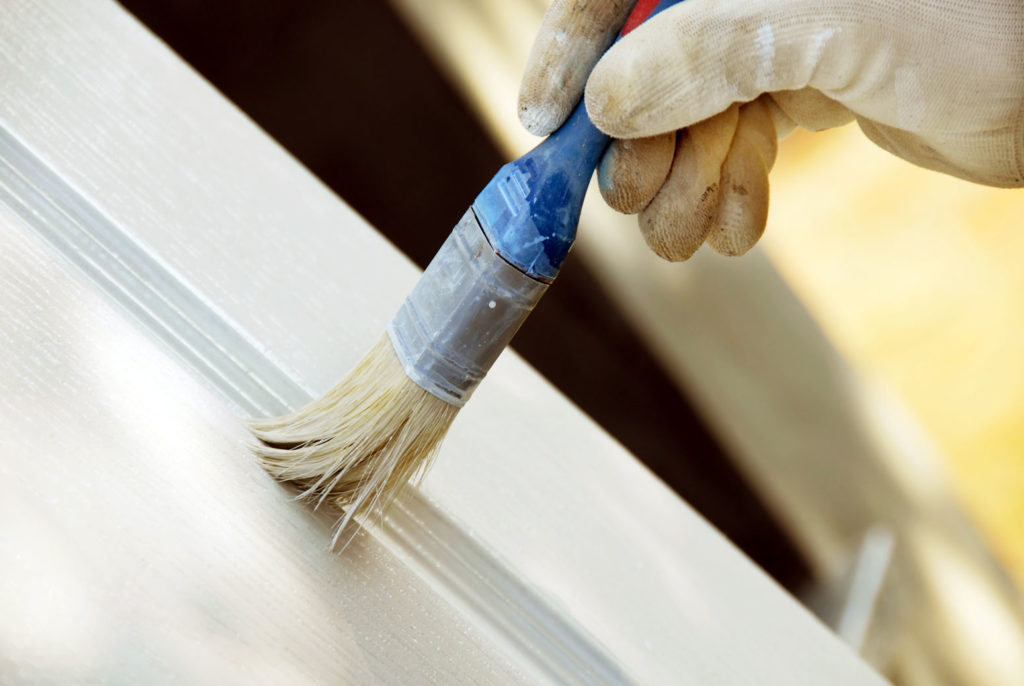 Sometimes I receive a question and I know the answer is “of course!” (or “of course not!”) but then I have to prove it, which is not always easy. Here’s today’s question:
Sometimes I receive a question and I know the answer is “of course!” (or “of course not!”) but then I have to prove it, which is not always easy. Here’s today’s question:
Does painting or refinishing a fire door in the field void the label?
Fire doors and frames are painted in the field every day, so it must be allowed by the codes and standards, right? But what if the code official says it’s not?
Just for clarification, this post is not about painting over the fire door label – that’s a different topic. It’s about whether painting/staining the door is considered a field modification that would require the door to be relabeled in the field. The model codes and NFPA 80 do not specifically address this, but there are a couple of helpful paragraphs in the NFPA 80 Handbook.
These paragraphs are both in reference to sections of NFPA 80 that talk about field modifications. Field modifications are alterations that require approval from the listing lab. If approval is not granted, the fire door assemblies would have to be relabeled in the field. The Handbook clarifies:
One frequently asked question regards painting a door. Generally, fire doors are permitted to be painted by the facility/building owner. The one caveat to painting fire doors is that moving parts (e.g., hinges, latches, and door closer arms) need to be able to move freely. Layers of accumulated paint can inhibit the operation of these items and prevent door leaves from functioning properly. In these cases, the old layers of paint will need to be removed to restore the moving parts to their proper operation. Paragraph 5.2.3.8 has a specific requirement regarding the accumulation of paint on moving parts.
The performance of fire door assemblies depends greatly on their installation. Paragraph 4.1.3.2 identifies work that can be performed on-site as part of the installation process. Routine maintenance work such as cleaning, painting/staining, and adjusting door hardware is also allowed. Changing out broken or worn-out hardware items is permitted, as long at the work involved is covered in 4.1.3.2. Repair work expressly covered in Section 5.5 is also allowed. When work requires cutting, mortising, or boring into door frames and doors (for other purposes than allowed in 4.1.3.2) it falls under the category of field modifications (see 5.1.5).
Based on the NFPA 80 Handbook, field painting/staining is not considered a field modification. Therefore, it does not require approval from the listing lab, or relabeling of the door. With that said, care must be taken not to paint over labels so they become illegible, or to affect the operation of the hardware.
Any questions?
You need to login or register to bookmark/favorite this content.






Lori,
I think and have heard some say that even 1 coat of paint on either hinges or a closer (ie. movable parts) should be considered an accumulation of paint that “could” (ie. something that “may” happen in the future) interfere with the operation of the assembly. I have always gone with the procedure that if the door opens and closes freely and is self-latching at the time of the inspection, even if there is an accumulation of multiple layers of paint, it is not a non-compliant issue. Only when the accumulation interferes with the operation does it become a non-compliant issue. If it is not interfering with the operation at the time I am there, I have to pass it as compliant. I can’t predict the future…if I could I’d be on a beach in the Caribbean somewhere because I got the Mega Lotto numbers right.
Paul
Good post. And yet, I am struck by one of the ‘guidelines’ for certification is that you do not add fuel to the door. Hence, fire rated door closers have a non-flammable fluid and not as we casually say oil. Since some paints would be better fuels right one the door than other, should we be thinking about the paints too?
I have never seen tests but I think you have. Are doors tested with paint on them??
Great blog and good for you to keep us thinking.
M
Hi Martin –
I don’t know much about paint – maybe an iDigHardware reader does. In the tests I witnessed, it looked like the doors were unfinished.
– Lori
Great info good to know . I have always maintained it’s up to the AHJ
Lori
Thanks so much for the information.
As always you are so helpful with your wealth of knowledge.
Thanks.. Very useful info..